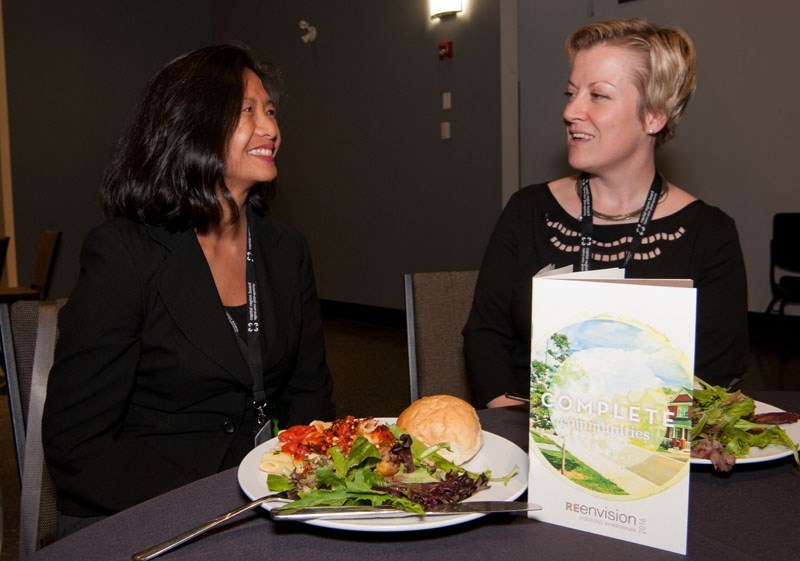City residents can have healthier lives and cleaner air if they work together to create complete communities, say planning experts.
About 140 people came to Morinville's Community Cultural Centre last Sept. 15 for the Capital Region Board's 5th annual ReEnvision Housing Symposium.
This conference brings planners, developers and engineers together to encourage a more diverse housing mix so people can stay in their home communities, said St. Albert Mayor Nolan Crouse, chair of the CRB.
"Diversity of housing stock gives you diversity of affordability and gives those with diverse money ... the ability to have a choice."
The theme of this year's conference was complete communities, the construction of which is one of the main goals of the CRB's new growth plan.
A complete community is one that has everything you need to live your daily life within walking distance, explained Eleanor Mohammed, president of the Canadian Institute of Planners and a speaker at the conference. That includes jobs, stores, public services, transportation methods, and appropriate, affordable housing for all ages.
"If you have to get into a car to serve the daily functions of your day, you're living in an incomplete community."
Incomplete communities
Many communities today are incomplete as they don't have a variety of housing types, Mohammed explained. If all you have is single-family homes, kids and seniors have to leave town as there's nothing of the size or price they need.
Likewise, if your neighbourhood doesn't have safe infrastructure for cycling, you have to drive to work, even if you're like most millennials and would rather bike, said Karen Lee, professor with the School of Public Health at the University of Alberta and speaker at the conference.
"They end up spending money on maintaining a car they didn't want in the first place," she said, and cause more pollution and congestion when they drive it.
Incomplete communities also drive up health care costs, Lee said. If you don't have small, affordable homes or stores within walking distance, your seniors have to move into seniors' homes when they're too old to drive, putting more stress on long-term care facilities.
We have all these incomplete communities due to years of poorly thought-out car-based planning, Lee and Mohammed said.
"We basically just let design happen," Lee said.
Walking solutions
Complete communities are vital for the health and well-being of our families, Lee said.
"Physical inactivity is one of our leading risk factors for our major epidemics today of heart disease, stroke, diabetes and cancers that are driving our health care costs through the roof. This can actually help us with the prevention of diseases that are eating so much of our budgets."
A 2014 study for the New York Department of Health and Mental Hygiene co-authored by Lee found that New Yorkers who lived in very walkable areas got about 100 minutes more exercise a week than those who lived in very unwalkable one, which was enough of a difference to impact obesity rates.
Other studies have shown that complete communities encourage more shopping and reduce air pollution and congestion, Lee said.
There are a lot of incremental steps cities can take to build more complete communities, Lee and Mohammed said. If you don't have the population for transit, for example, you can arrange a car-sharing program. If you don't have LRT, dedicate one lane of your road to bus rapid transit.
St. Albert could become more complete if it better integrated its trails and transit systems, Lee said. If it brought in on-street bike lanes, more people would be able to ride to bus stops, improving transit use.
"The most important thing when it comes to building a complete community is the relationships you need to build," Mohammed said. Politicians, planners, business and community leaders all have to work together to make these changes happen.
It's also important to find an issue (such as health) that resonates with all these groups, Lee said.
"If our health and well-being of our families are important, then we have to do these things."




